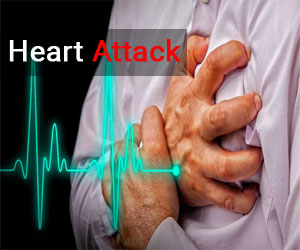- Home
- Editorial
- News
- Practice Guidelines
- Anesthesiology Guidelines
- Cancer Guidelines
- Cardiac Sciences Guidelines
- Critical Care Guidelines
- Dentistry Guidelines
- Dermatology Guidelines
- Diabetes and Endo Guidelines
- Diagnostics Guidelines
- ENT Guidelines
- Featured Practice Guidelines
- Gastroenterology Guidelines
- Geriatrics Guidelines
- Medicine Guidelines
- Nephrology Guidelines
- Neurosciences Guidelines
- Obs and Gynae Guidelines
- Ophthalmology Guidelines
- Orthopaedics Guidelines
- Paediatrics Guidelines
- Psychiatry Guidelines
- Pulmonology Guidelines
- Radiology Guidelines
- Surgery Guidelines
- Urology Guidelines
Push up capacity of more than 40 rules out heart attack risk in men: JAMA

According to a new study appearing in JAMA, a push up capacity of more than 40 rules out cardiovascular disease ,CVD risk including heart attack and heart failure in men.
The ability to do a lot of pushups may be a sign not only of strength, but also of good heart health, the study suggests.
The findings suggest that "pushup capacity could be an easy, no-cost method to help assess cardiovascular disease risk," study lead author Justin Yang, an occupational medicine resident at the Harvard T.H. Chan School of Public Health in Boston, said in a statement.
This may be a rough measure but an effective one for assessment of cardiovascular capacity in active men.Physically active , middle-aged men able to complete more than 40 push-ups had a significantly lower risk of cardiovascular disease (CVD) outcomes -- including diagnoses of coronary artery disease and major events such as heart failure -- during 10 years of follow-up compared with those who were able to do less than 10 push-ups during the baseline exam.
Our findings provide evidence that push-up capacit could be an easy, no-cost method to help assess cardiovascular disease risk in almost any setting. Surprisingly, push-up capacity was more strongly associated with cardiovascular disease risk than the results of submaximal treadmill tests," said first author Justin Yang, occupational medicine resident in the Department of Environmental Health at Harvard T.H. Chan School of Public Health.
This study was published February 15, 2019 in JAMA Network Open.
Objective assessments of physical fitness are considered strong predictors of health status; however, most current tools such as treadmill tests are too expensive and time-consuming to use during routine exams. This is the first known study to report an association between push-up capacity and subsequent cardiovascular disease outcomes.
The researchers analyzed health data from 1,104 active male firefighters collected from 2000 to 2010. Their mean age was 39.6 and mean body mass index (BMI) was 28.7. Participants' push-up capacity and submaximal treadmill exercise tolerance were measured at the start of the study, and each man subsequently completed annual physical examinations and health and medical questionnaires.
During the 10-year study period, 37 CVD-related outcomes were reported. All but one occurred in men who completed 40 or fewer pushups during the baseline exam. The researchers calculated that men able to do more than 40 push-ups had a 96% reduced risk of CVD events compared with those who were able to do less than 10 push-ups. Push-up capacity was more strongly associated with lower incidence of cardiovascular disease events than was aerobic capacity as estimated by a submaximal treadmill exercise test.
Because the study population consisted of middle-aged, occupationally active men, the results may not be generalizable to women or to men of other ages or who are less active, note the authors.
"This study emphasizes the importance of physical fitness on health, and why clinicians should assess fitness during clinical encounters," said senior author Stefanos Kales, professor in the Department of Environmental Health at Harvard Chan School and chief of occupational medicine at Cambridge Health Alliance.

Disclaimer: This site is primarily intended for healthcare professionals. Any content/information on this website does not replace the advice of medical and/or health professionals and should not be construed as medical/diagnostic advice/endorsement or prescription. Use of this site is subject to our terms of use, privacy policy, advertisement policy. © 2020 Minerva Medical Treatment Pvt Ltd